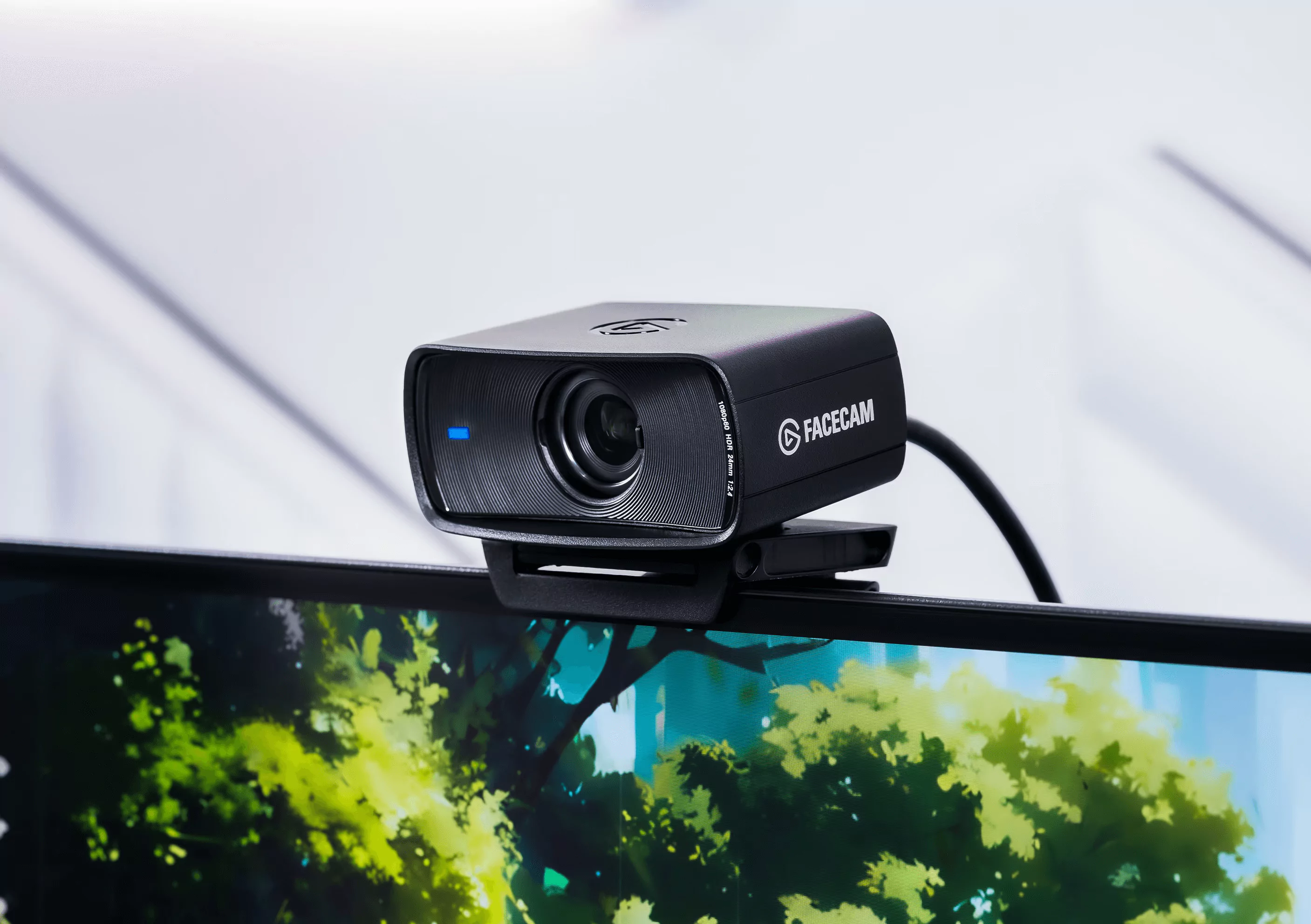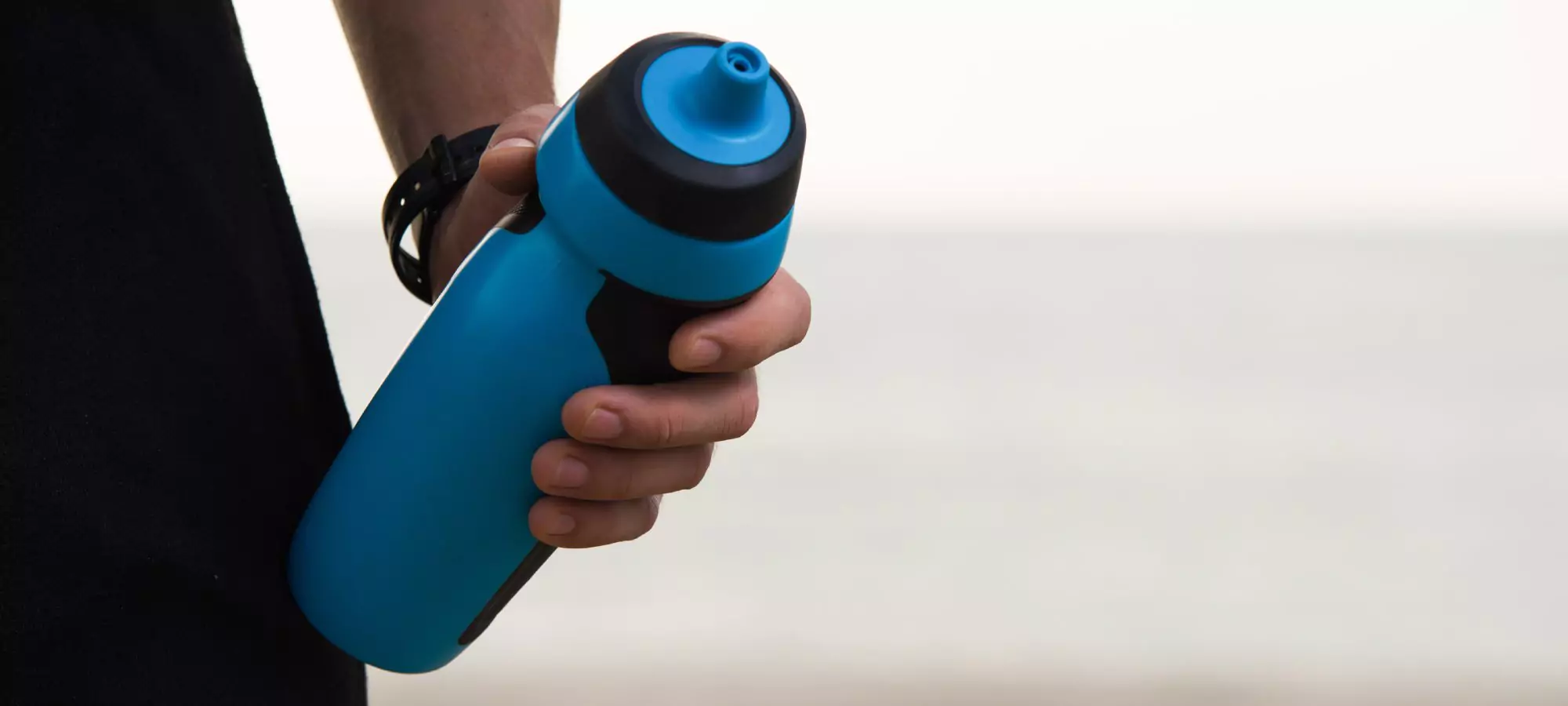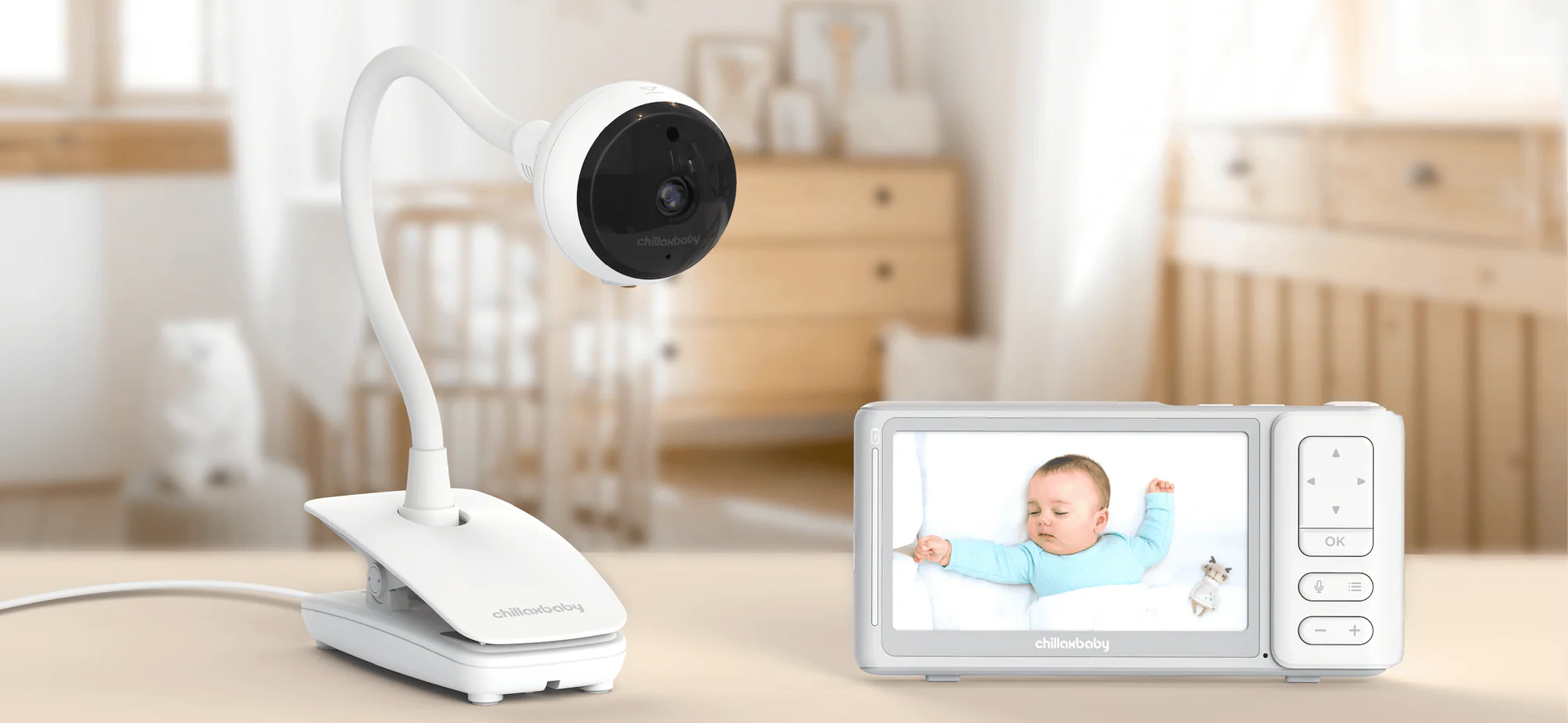Last updated on:
November 19, 2025
The Ooni Koda 16 represents one of the most accessible entries into high-temperature outdoor pizza cooking, offering the convenience of gas fuel with the performance needed for authentic Neapolitan-style results. After extensive testing across multiple cooking sessions, this review examines every aspect of this gas-powered pizza oven to help you determine if it fits your outdoor cooking needs.
Overview and First Impressions
The Ooni Koda 16 is a gas-powered outdoor pizza oven with a 16-inch cooking surface that weighs 40 pounds when fully assembled. Upon removing it from the box, the build quality immediately stands out. The powder-coated carbon steel shell feels solid and well-constructed, while the compact design communicates both portability and durability. The black finish gives the oven a modern appearance that fits well in most outdoor spaces.
The setup process takes less than five minutes and requires minimal effort. The oven arrives nearly ready to use, with only the legs needing to be unfolded and the pizza stone slid into place. The folding legs lock securely into position and feature non-slip feet that provide stable support on various surfaces. Once positioned on a table or cart, the only remaining step is connecting the included gas regulator to a standard propane tank.
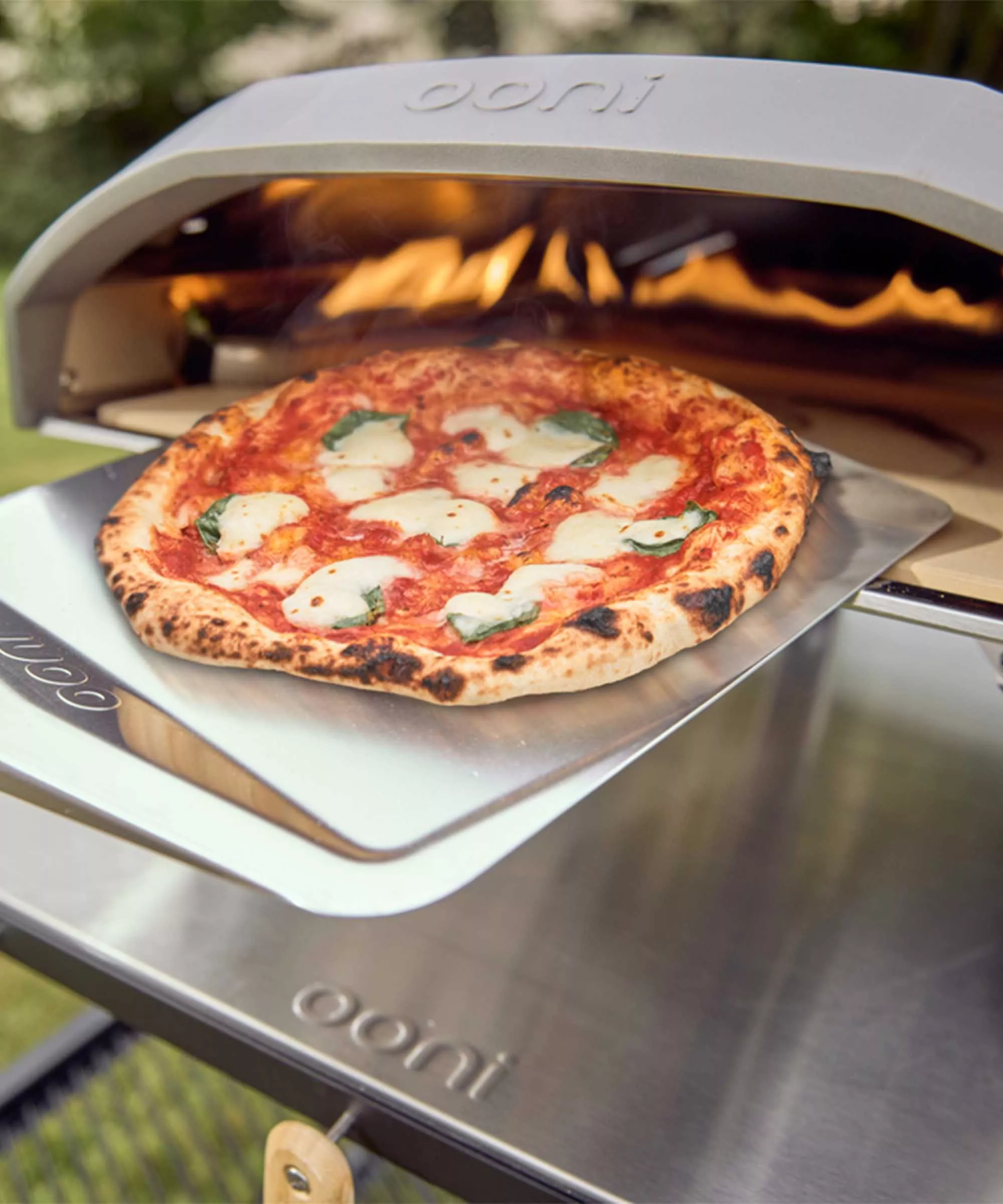
Build Quality and Construction
The carbon steel construction forms the foundation of the Koda 16's durability. The shell is powder-coated for weather resistance and insulated with ceramic fiber to retain heat. This combination creates an oven that withstands regular outdoor use with minimal maintenance required. The material choices reflect a focus on longevity over unnecessary features.
The cordierite pizza stone measures 16 inches square and sits directly on supports inside the oven chamber. The stone slides in and out without any fasteners or covers, making installation and removal straightforward. Cordierite offers excellent heat retention and distributes temperature evenly across the cooking surface, which contributes to consistent crust development.
The L-shaped burner runs along the back wall and left side of the oven interior, creating what Ooni calls a "waterfall effect" flame pattern. This design provides more even heat distribution than traditional single-point burners found in other pizza ovens. A metal flame guard prevents pizzas from getting too close to the direct flame, which helps avoid burning while still allowing proper charring.
The open-front design eliminates the need for a door, which simplifies the cooking process. You can see your pizza from multiple angles while it cooks, and small mirrors positioned inside the opening provide additional viewing angles. This open design does mean some heat escapes, but the powerful burner compensates by maintaining target temperatures consistently.
Temperature Control and Performance
Temperature management is where the Koda 16 demonstrates its practical design. The single control dial on the right side provides precise adjustment of the flame height and intensity. The dial turns smoothly and offers a wide range from a low simmer to full blast, giving you control over cooking temperatures from approximately 480°F to 950°F.
The oven reaches pizza-cooking temperatures quickly. Testing confirms that the Koda 16 hits 700°F in roughly 20 minutes from ignition, though allowing 30-40 minutes for the stone to fully heat through provides more consistent results, particularly when cooking multiple pizzas in succession. The ceramic fiber insulation helps the oven maintain temperature once heated, requiring only minor dial adjustments between pizzas.
The L-shaped burner creates a heat pattern where the back left corner runs hottest. This design requires rotating pizzas every 20-30 seconds during cooking, but the generous opening makes these rotations easy to execute. The heat pattern actually becomes an advantage once you understand it, as you can position pizzas strategically to achieve the char and doneness you want.
Gas ignition uses a simple push-button mechanism combined with turning the dial to the desired flame level. The built-in flame safety device automatically shuts off gas flow if the flame extinguishes, providing an important safety feature. Occasionally, the igniter requires a few attempts to light, particularly if the gas regulator needs to release built-up pressure by briefly disconnecting from the propane tank.
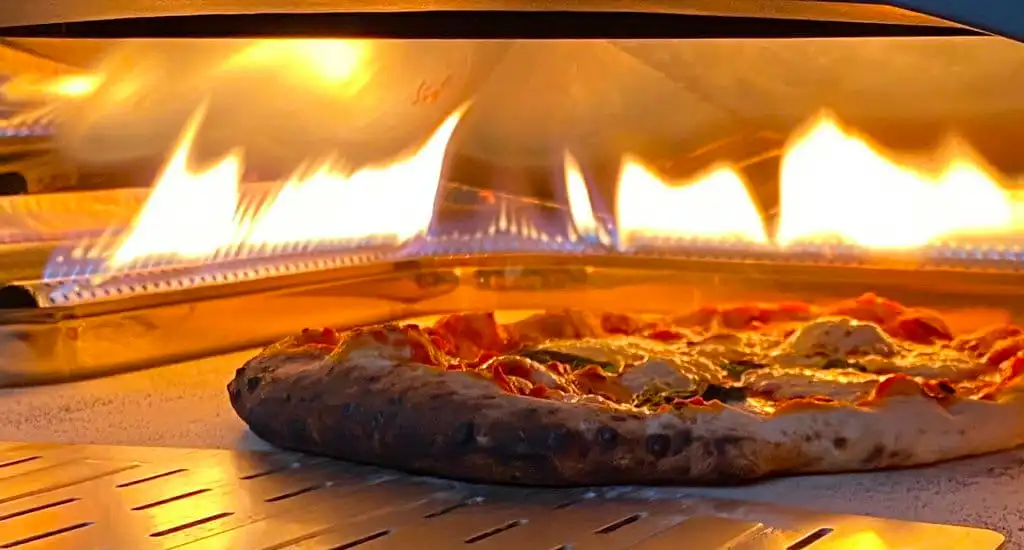
Cooking Versatility
The 16-inch cooking surface provides adequate space for pizzas up to 16 inches in diameter, though most users find 12-14 inch pizzas more practical as they leave room for easier maneuvering. The 4.4-inch opening height accommodates not just pizzas but also cast iron cookware for other dishes.
Pizza performance is excellent across multiple styles. Neapolitan pizzas cook in 60-90 seconds at full temperature, developing the characteristic leopard-spotted char on the crust while keeping the interior soft and airy. The high heat creates proper crust structure without overcooking toppings. New York-style pizzas work well at slightly lower temperatures, typically in the 700-750°F range, with cook times extending to 2-3 minutes for thicker doughs.
The technique that works best involves preheating the oven on high for 20-30 minutes, then reducing the flame to low before launching your pizza. This approach keeps the stone hot while preventing the top from burning before the bottom cooks through. The method requires some practice but quickly becomes intuitive.
Beyond pizza, the Koda 16 handles various other foods effectively. Breads like focaccia bake well directly on the stone, developing crispy bottoms and even browning. Cast iron pans expand the cooking options to include seared steaks, roasted vegetables, and even dishes like mac and cheese. The adjustable temperature control makes the oven functional for different cooking methods, though you need to purchase separate cast iron cookware for non-pizza applications.
The gas fuel source provides advantages for versatility. Unlike wood-fired ovens that impart smoke flavor, gas burns clean and allows the natural flavors of your ingredients to shine. Temperature adjustments happen immediately with a turn of the dial, giving you precise control that wood or charcoal cannot match. This control makes it easier to cook items that require specific temperature ranges.
Setup and Portability
Setup takes less time than reading the included manual. Unfold the three legs, slide in the pizza stone, connect the gas hose to your propane tank, and you're ready to cook. The simplicity eliminates the common frustration of complicated assembly processes.
Portability is a genuine feature rather than marketing speak. At 40 pounds, the Koda 16 is heavy enough to feel substantial but light enough for one person to move comfortably. The legs fold flat against the body, reducing the profile for transport or storage. The compact dimensions allow it to fit in most car trunks or storage areas without difficulty.
The gas connection uses standard propane tanks, the same type used for gas grills. A full 20-pound tank provides fuel for many cooking sessions, though exact usage varies with temperature settings and cook times. The oven also works with smaller 1-pound propane cylinders when using an adapter, which can be useful for camping or portable use, though frequent cooking will require tank changes.
For outdoor placement, the Koda 16 needs a stable, heat-resistant surface positioned away from combustible materials. A standard patio table works, though a dedicated cart or stand places the oven at a more comfortable working height. The open front means you should position it where escaping heat won't be an issue.

Accessories and Expandability
The Koda 16 does not include a pizza peel, which is essential for launching and retrieving pizzas. A 16-inch peel matches the oven's capacity and provides adequate surface area for larger pizzas. Ooni offers matched peels, though third-party options work equally well at lower prices.
A perforated pizza peel improves the launching process by allowing excess flour to fall through holes, preventing flour from burning on the stone and creating smoke. This accessory becomes particularly valuable once you start cooking regularly.
An infrared thermometer takes the guesswork out of determining when the oven reaches proper cooking temperature. The Koda 16 does not include a built-in thermometer, so this tool helps you understand when the stone has heated sufficiently. Surface temperature and air temperature differ significantly, making this measurement tool more useful than it might initially seem.
Cast iron cookware extends the oven's capabilities beyond pizza. Ooni offers various pan sizes that fit the oven opening, though standard cast iron skillets work if they fit through the 16-inch opening. A turning peel makes rotating pizzas easier than using a standard peel, though it requires practice to use effectively.
A protective cover helps when storing the oven outdoors. While the powder-coated steel resists weather, a cover extends the finish's lifespan and keeps the interior clean between uses. Storage indoors provides better protection but isn't always practical given the oven's size.
Fuel Efficiency and Operating Costs
Gas consumption runs approximately 1.1 pounds per hour at full blast, translating to roughly 29,000 BTU. In practical terms, a standard 20-pound propane tank provides many cooking sessions before requiring a refill. The exact number of pizzas per tank depends on your preheating time and temperature settings, but most users report 15-20 cooking sessions per tank.
The gas burner operates efficiently compared to wood or charcoal options. There's no need to purchase specialty fuels or manage fire maintenance. Standard propane is widely available and relatively inexpensive. The ability to shut off the gas immediately after cooking means no wasted fuel, unlike charcoal or wood that continues burning.
Operating costs remain minimal beyond the initial purchase and propane refills. The carbon steel construction requires no seasoning, and the powder coat maintains its finish with basic cleaning. The pizza stone naturally self-cleans through high-heat sessions, burning off residue without scrubbing. The main wear item is the pizza stone, which may eventually crack from thermal stress or damage, though this typically takes years of regular use.
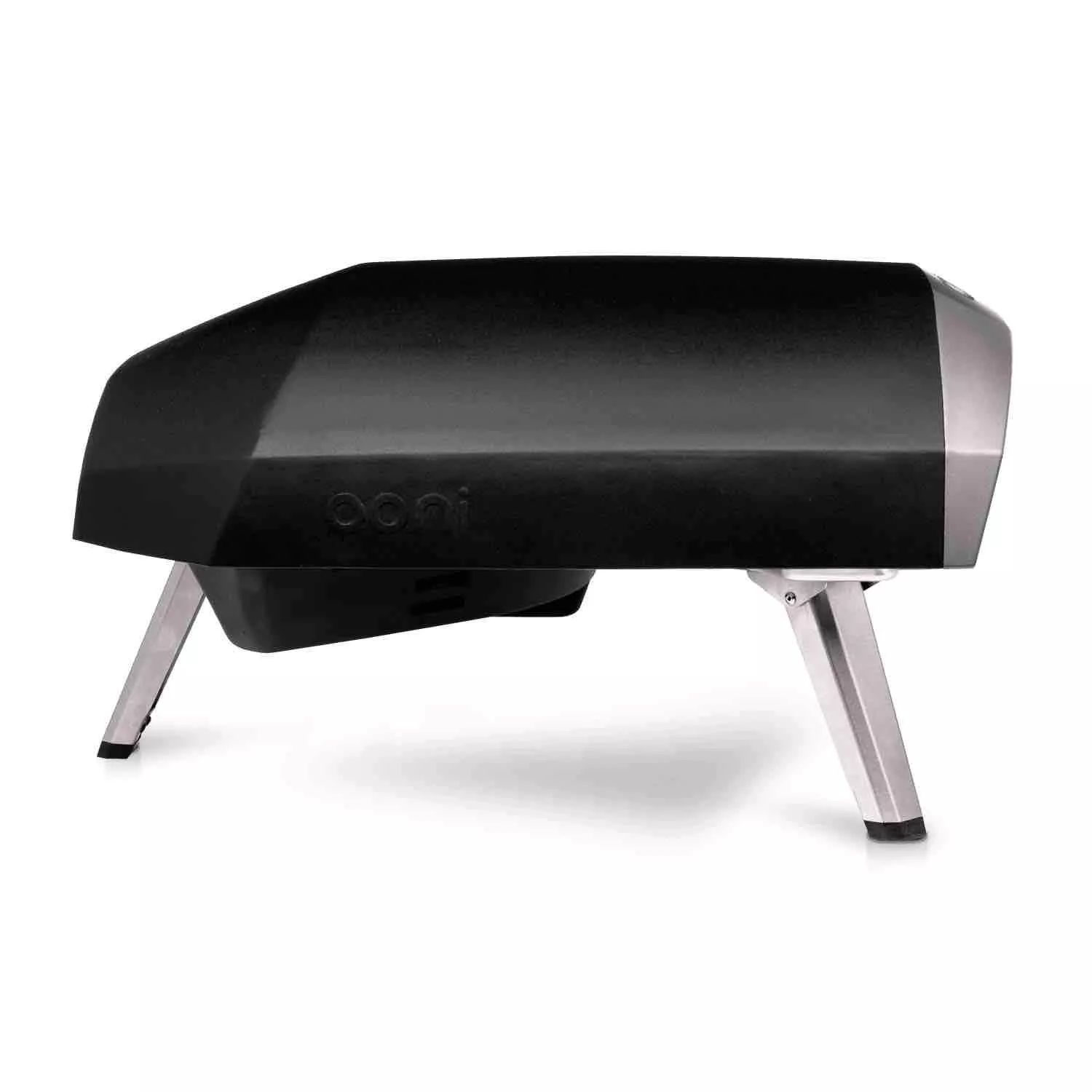
Maintenance and Durability
Daily maintenance is straightforward. After cooking, run the oven at high temperature for 10-15 minutes to burn off any spilled toppings or flour on the stone. This high-heat cleaning eliminates residue without scrubbing. Once cooled, wipe the exterior with a damp cloth to remove any splatters or buildup.
The pizza stone requires minimal care. It naturally darkens and develops patina with use, which doesn't affect performance. Avoid thermal shock by not placing cold stones in hot ovens or hot stones in cold water. If food sticks to the stone, scrape it off with a metal scraper rather than washing with soap, which the stone absorbs.
The exterior powder coating holds up well to outdoor conditions. Regular exposure to weather causes minimal deterioration, though storing the oven indoors or under cover extends the finish's appearance. Coastal environments may require more frequent exterior cleaning to prevent salt accumulation.
The gas burner and ignition system need periodic inspection. Check the burner annually for blockages or damage, and clean the flame ports if they become clogged. The igniter button may eventually wear out from repeated use, though this typically takes several years. Replacement parts are available from Ooni.
Long-term durability appears solid based on user reports and our testing. The carbon steel construction withstands the thermal cycling of repeated heating and cooling without warping. The ceramic fiber insulation maintains its effectiveness over time. The main concern is the pizza stone, which can crack if dropped or subjected to extreme temperature changes, but under normal use conditions, it lasts for years.
Drawbacks and Limitations
The 16-inch capacity, while larger than the 12-inch model, still limits you to pizzas that fit most family gatherings but may feel cramped for larger parties. Cooking for crowds means making pizzas in batches, which extends the overall cooking time despite each individual pizza cooking quickly.
The lack of wood smoke flavor disappoints those seeking authentic wood-fired taste. Gas burns completely clean, which is an advantage for maintenance but means your pizzas lack the subtle smoke notes that wood or charcoal provide. For most people, this trade-off favors convenience, but purists may find it lacking.
The open-front design loses heat to the environment, which can extend preheating times on cold or windy days. Wind particularly affects performance, requiring a sheltered location for consistent results. Some competing models include doors that help retain heat, though they add complexity to the cooking process.
Temperature measurement requires purchasing a separate infrared thermometer. While the oven performs well once you understand its heat patterns, new users struggle to know when it's ready without one. Including a basic thermometer would improve the out-of-box experience.
The L-shaped burner creates a heat gradient that requires rotating pizzas during cooking. While the generous opening makes this manageable, it adds a step that some users find tedious. Models with more even heat distribution reduce the rotation frequency, though they typically cost more.
The price point positions it against other gas pizza ovens and places it within reach of high-end gas grills. Whether it represents good value depends on how often you'll use it. For dedicated pizza enthusiasts, the investment pays off quickly. For occasional users, the cost may be harder to justify.
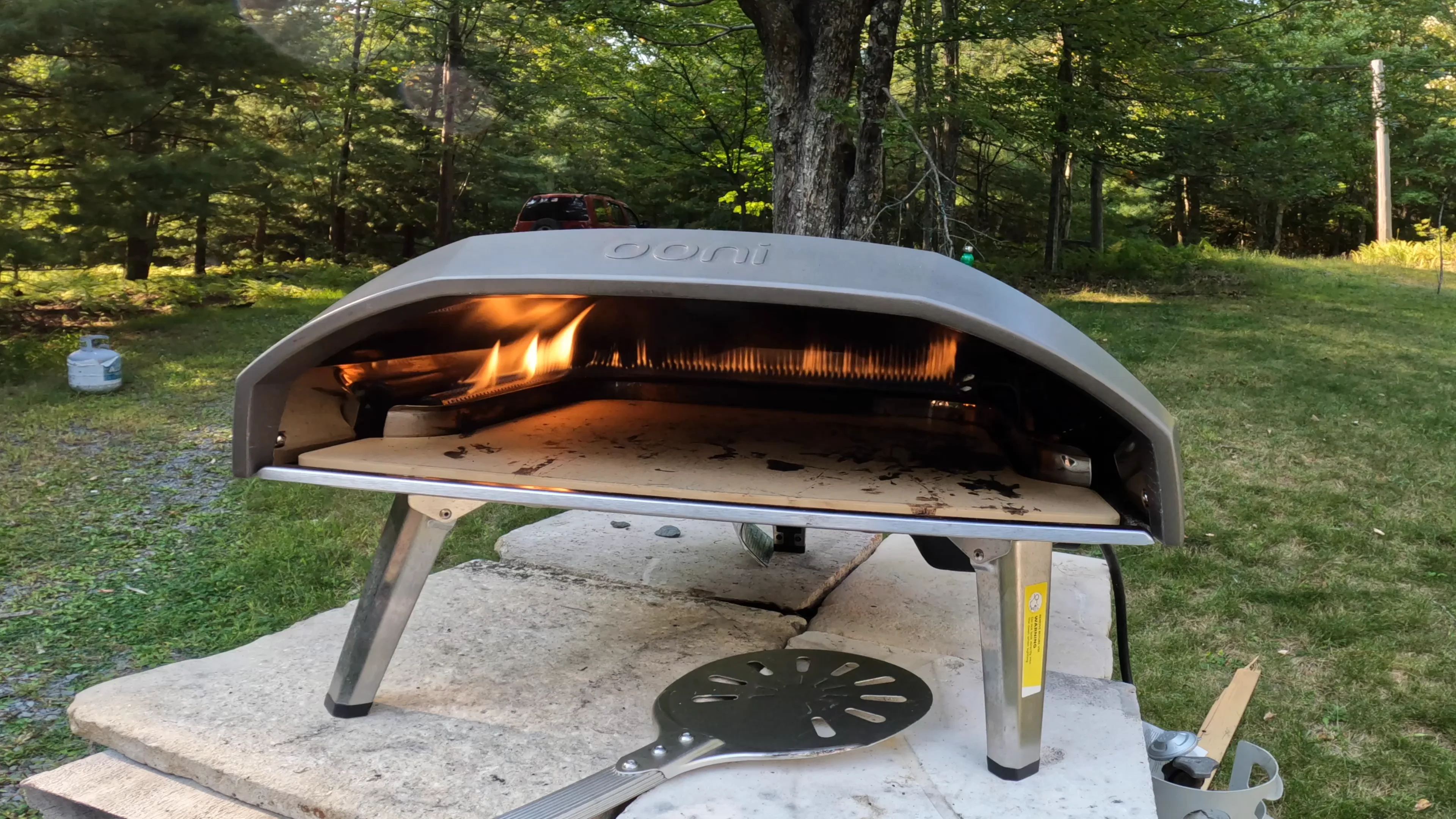
Value Proposition and Competition
The Koda 16 retails for $599, placing it in the mid-to-upper range for portable pizza ovens. Compared to the smaller Koda 12 at $399, the larger size provides enough additional cooking space to justify the $200 premium for most users. The bigger opening makes launching and rotating pizzas noticeably easier.
Against the Ooni Karu 16, which offers multi-fuel capability including wood and charcoal in addition to gas, the Koda 16 trades flexibility for simplicity and lower cost. The Karu 16 costs more and requires more setup, but provides wood-fired flavor when desired. For users who want only gas cooking, the Koda 16 delivers better value.
Competing brands like Gozney offer the Roccbox, which provides similar performance in a slightly smaller package. The Roccbox includes a built-in thermometer and features a more compact design, but costs similarly and has a smaller cooking area. The Koda 16 provides better value for users who want maximum cooking space.
The 60-day money-back guarantee and three-year warranty provide confidence in the purchase. Ooni's customer service has a strong reputation, and replacement parts remain available for repairs. This support adds value beyond the initial purchase price.
For serious home cooks who want restaurant-quality pizza without the complexity of wood-fired cooking, the Koda 16 represents solid value. The combination of ease of use, reliable performance, and adequate cooking space justifies the cost for regular users. Casual users may find the price hard to justify compared to grilling pizzas on a standard gas grill, though the results differ significantly in quality.
Final Verdict
The Ooni Koda 16 is a well-executed gas pizza oven that delivers on its core promise: making high-quality pizza at home with minimal fuss. The combination of quick heat-up time, intuitive operation, and consistent cooking performance makes it accessible to users of all skill levels. The gas fuel source provides the convenience that makes regular use practical rather than a special event.
The oven works best for home cooks who want authentic pizza results without investing time in fire management. For those who enjoy the process of working with wood or charcoal, multi-fuel options like the Karu 16 provide more engagement. But for users who want great pizza without the learning curve of traditional methods, the Koda 16 removes barriers to success.
If you cook pizza regularly, appreciate convenience over tradition, and value consistent results, the Ooni Koda 16 represents a practical investment that will change how you approach pizza at home. The initial cost is offset by the quality of results and the likelihood that you'll actually use it frequently rather than letting it gather dust.
For the right user, the Koda 16 isn't just a pizza oven—it's a tool that makes restaurant-quality pizza accessible any night of the week, with minimal setup and cleanup. That practical convenience, combined with genuinely excellent cooking performance, makes it easy to recommend for anyone serious about pizza but realistic about their time and effort constraints.
![image of a customer service representative (focusing on workspace) [background image]](https://cdn.prod.website-files.com/686ff0f42c677102ebc56fac/691dc193d9130d2f5b29fa31_6-ooni-koda-16-w-1422-perforated-peel-pepperoni-691dc18e3df8c.webp)
